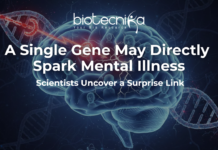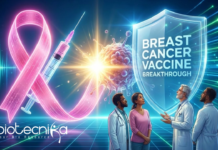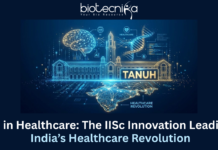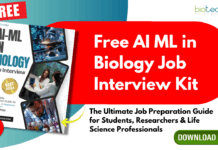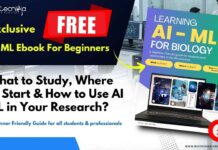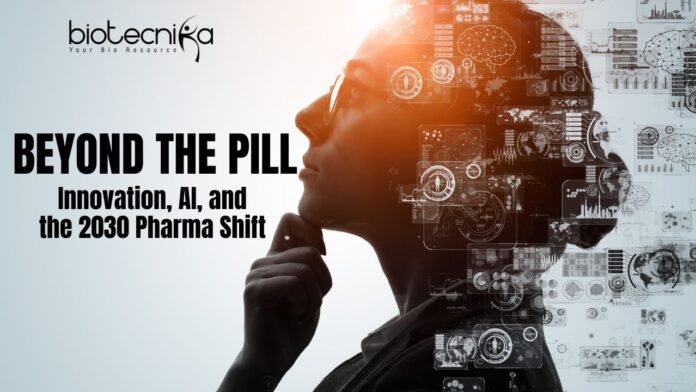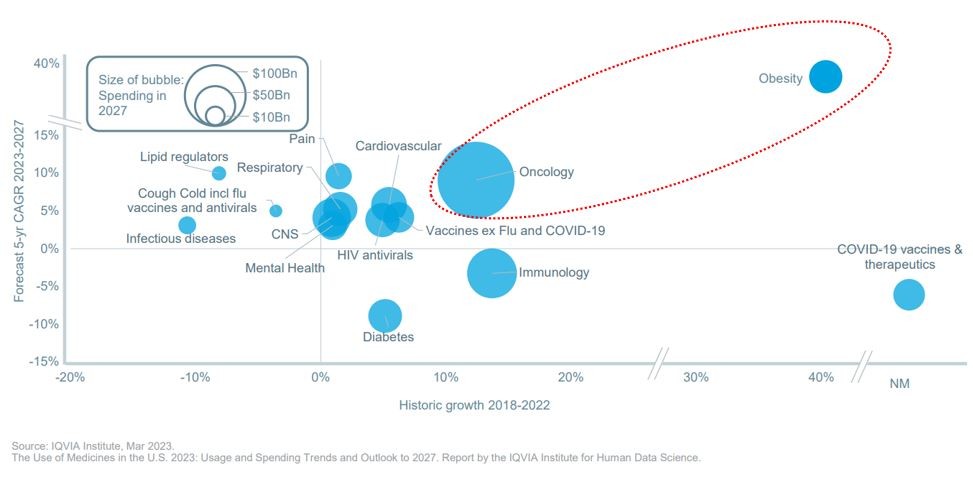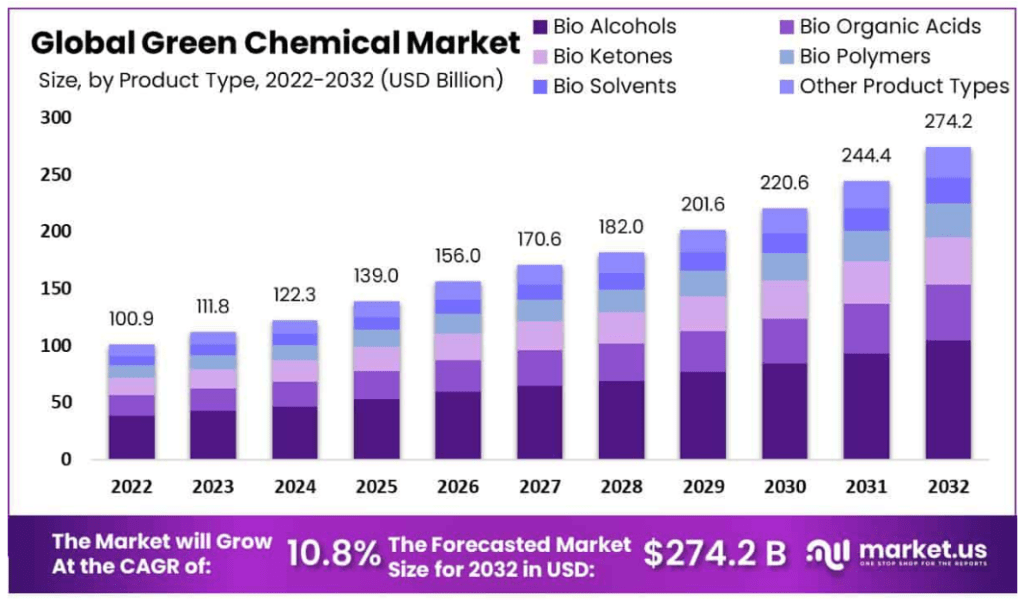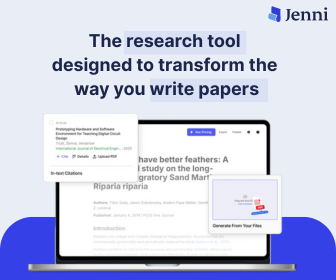AI R&D & Pharma Innovation – Shaping The Future By 2030
Artificial Intelligence is no longer just a future concept; it’s now a part of our daily lives, from phone apps to major industries. So, what comes next? Are we still heading into the future of Artificial Intelligence, or are we already in it?
The Pharmaceutical companies, with many offers, find themselves at a crossroads, shaped by accelerating research, innovation, shifting global dynamics, and the urgent need for resilience. As Geopolitical Tensions, Environmental Regulations, and Technological breakthroughs transform how industry must rethink everything from Research and Development to supply chain strategy.
Here are three key forces shaping AI R&D & Pharma Innovation by 2030: booming Therapy Areas, Artificial Intelligence-driven innovation, and evolving global supply chains.
1. High-Growth Therapy Areas:
Oncology: Leading the Charge
Cancer remains a leading cause of global mortality, making oncology the most funded as well as fastest-evolving therapeutic area. Aging populations and early detection contribute to the growing number of cases, while scientific advances are driving a revolution in treatment.
- Targeted Therapies: These drugs target specific genes and proteins in cancer cells, resulting in more effective treatments with fewer side effects.
- CAR-T Treatments: Chimeric Antigen Receptor T-cell therapy is reshaping hematologic cancer treatment by genetically modifying a patient’s T cells.
- Checkpoint Inhibitors: These therapies unblock the immune system to attack tumors and have become a cornerstone of modern cancer immunotherapy.
- Personalized Cancer Medicine: Using genomic profiling to match patients with the most effective treatments based on their tumor’s molecular structure.
Immunology: Innovation Meets Intense Competition
Immunology is exploding with innovation, but also facing market saturation, especially in autoimmune diseases and inflammation:
- Autoimmune vs. Inflammatory Diseases: While autoimmune disease drugs are growing steadily, medications for inflammatory diseases are experiencing a sharper surge due to newer mechanisms of action.
- Biosimilars: These cost-effective alternatives to biologics like Humira are reducing treatment expenses and encouraging payers to prefer them.
- Crowded Pipeline: With numerous new therapies entering clinical trials, companies must intensify their efforts to differentiate their products and secure regulatory approval and reimbursement.
Metabolic Diseases: The Ozempic Effect
Breakthroughs in Glucagon-like peptide-1 receptor agonists are reshaping how the world treats diabetes and obesity:
- Weight Management & Diabetes: Drugs like semaglutide and tirzepatide offer dual benefits—not just lowering blood sugar but also achieving significant weight loss.
- Cardiovascular Benefits: Emerging data shows that these drugs may also reduce cardiovascular risk, making them attractive across comorbid conditions.
- Global Demand: The rising obesity rates in both developed and emerging markets are driving demand for scalable treatment options.
- AI and Predictive Analytics: Transforming Pharma from Within
AI in Drug Discovery
AI is enabling researchers to simulate, test, and optimize molecules at unprecedented speed:
- Target Identification: AI enables the rapid identification of disease-causing proteins and potential drug targets compared to traditional methods.
- Molecular Design: Machine learning models can generate novel molecular structures with optimal properties for drug development.
- Toxicity Prediction: Early-stage models predict the potential toxicity of a drug before it’s even tested in animals or humans.
- Case Example: Insilico Medicine discovered and advanced a fibrosis drug using AI in under 18 months, a process that usually takes 5-6 years.
Predictive Analytics for Smarter Decisions
Operational efficiency is becoming as important as scientific innovation:
- Supply Chain Optimization: Predictive models anticipate disruptions, allowing for agile sourcing and distribution.
- Market Forecasting: Artificial Intelligence-driven demand forecasting helps companies adjust inventory levels based on seasonality, regulation, and competitor activity.
- Clinical Trial Design: Analytics helps identify ideal patient populations, predict dropout rates, and improve recruitment timelines.
- Sustainable & Resilient Supply Chains: The New Competitive Edge
Environmental Regulations Driving Change
Environmental compliance is no longer optional, particularly in API-heavy nations:
- Factory Shutdowns: India and China are shutting down non-compliant facilities, creating supply gaps and driving up costs.
- Stringent Audits: Regulators are conducting more frequent site inspections and quality audits worldwide.
- Sustainability Mandates: The pharmaceutical industry is now required to submit environmental impact assessments for the production of Active Pharmaceutical Ingredients.
Green Chemistry Is the Future
To remain cost-effective and compliant, companies are shifting to greener processes:
- Solvent Recovery: Recycling solvents reduces cost and waste.
- Circular Manufacturing: By-products are reused or repurposed, reducing landfill and emissions.
- Biocatalysis: Enzyme-driven chemical reactions replace harsh chemicals, lowering the carbon footprint.
- Continuous Manufacturing: A move from batch to continuous production reduces energy use, space, and costs.
Tariffs and Trade Tensions: Redefining API Sourcing
Global pharmaceutical supply chains are being restructured in response to rising protectionism:
- Tariffs on Chinese APIs: The U.S. has imposed steep tariffs, making many essential APIs more expensive.
- Reshoring: Pharma companies are investing in domestic facilities, despite higher operational costs.
- Sourcing Diversification: Firms are identifying alternative suppliers in Vietnam, Bangladesh, Eastern Europe, and Latin America.
- Data Tools: Platforms like Panjiva or ImportGenius help track sourcing costs, shipment disruptions, and competitive pricing in real time.
- The Rise of Personalized Medicine
Personalized medicine is transitioning from a futuristic concept to a healthcare reality.
AI-Powered Genomics
Artificial Intelligence and Machine Learning analyze enormous datasets to uncover genetic patterns and tailor treatment strategies.
- Pharmacogenomics: Matches drugs to genetic profiles, improving efficacy and reducing side effects.
- CRISPR & Gene Editing: Precision gene editing is now being used to treat inherited conditions, such as sickle cell disease and certain types of cancer.
Real-World Data (RWD)
Post-marketing data from electronic health records, wearable devices, and patient-reported outcomes provides:
- Better Insight into Drug Performance: RWD shows how drugs work in diverse populations and real settings.
- Regulatory & Reimbursement Support: Data supports expanded use cases and pricing negotiations.
Next-Gen Devices
Technologies are making personalized care more accessible:
- Wearables: Continuously track patients’ vitals and alert providers to any anomalies.
- At-Home Diagnostics: Remote kits allow for chronic disease monitoring without hospital visits.
- Connected Devices: Smart inhalers and injectors track dose delivery and adherence in real-time.
Pharma in 2030: A New Reality
The next decade will be defined by how successfully the Pharmaceutical companies adapt to this fast-changing environment.
To thrive, companies must:
- Invest in Next-Gen Tech: From AI platforms to cloud-based analytics and digital twins for R&D.
- Build Sustainable Infrastructure: Green chemistry, low-emission facilities, and circular manufacturing will be competitive differentiators.
- Focus on Outcome-Based Healthcare: Shift from volume to value, with pricing linked to real-world patient outcomes.
- Stay Nimble: Navigate geopolitical shifts, regulatory reforms, and supply chain turbulence with agility.
The future belongs to companies that can innovate with purpose, adapt with speed, and lead with data. By 2030, AI R&D & Pharma Innovation, the pharma landscape will look nothing like it does today, and those who start transforming now will shape what comes next.


